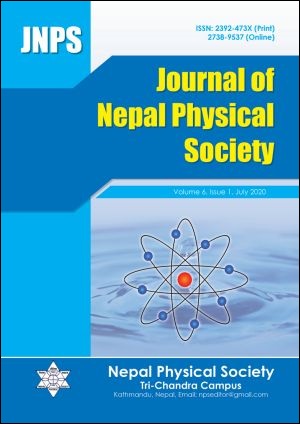An Experimental Study of Co-Axial Dielectric Barrier Discharge for Ozone Generation
DOI:
https://doi.org/10.3126/jnphyssoc.v6i1.30554Keywords:
Applied Voltage, CCDBD, Electrodes, Ozone Analyzer BMT 964, O3 concentrationAbstract
In this research work, co-axial cylindrical dielectric barrier discharge (CCDBD) system has been used as a ozone generator for ozone production with air as a working gas. The breakdown of air was generated inside the reactor by using low line frequency of 50 Hz and high AC voltage power supply system. The variation of air flow rate (Q) was taken from 10 to 16 l/min in this experiment. The O3 concentration denoted by C(O3) decreases with increasing the rate of flow of air at fixed discharge time and applied voltage. When discharge time (t) increases, C(O3) increases at fixed applied voltage. C(O3) also increases with increasing applied voltage (V) for constant discharge time. If the gap space between the electrodes increases then C(O3) increases. We have used glass tube reactor for this work having internal diameter of 18 mm and copper, brass and iron electrodes of diameter 8 mm. It was estimated that C(O3) found higher for copper electrode than both brass and iron electrode for certain discharge time, applied voltage and reactor diameter.
Downloads
Downloads
Published
How to Cite
Issue
Section
License
All right reserved. No part of this Journal may be reproduced in any form or by any electronic or mechanical means, including information storage and retrieval system, without permission in writing from the publisher, except by a reviewer who may quote brief passage in a review. The views and interpretation in this journal are those of author(s) and they are not attributable to the NPS.




